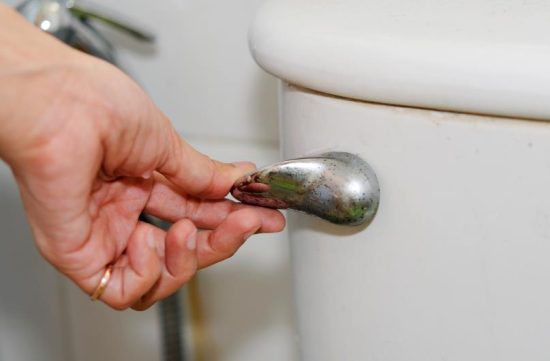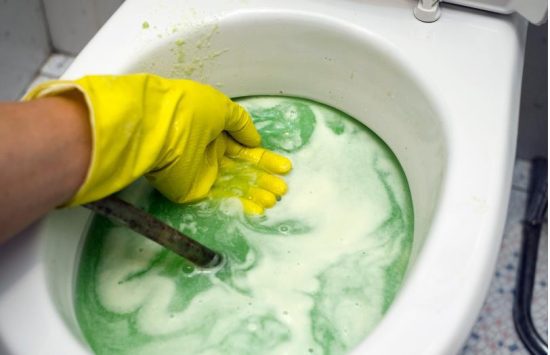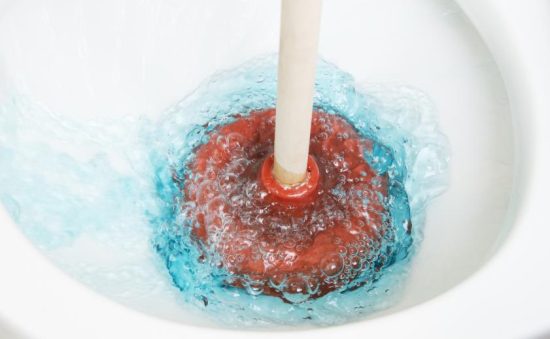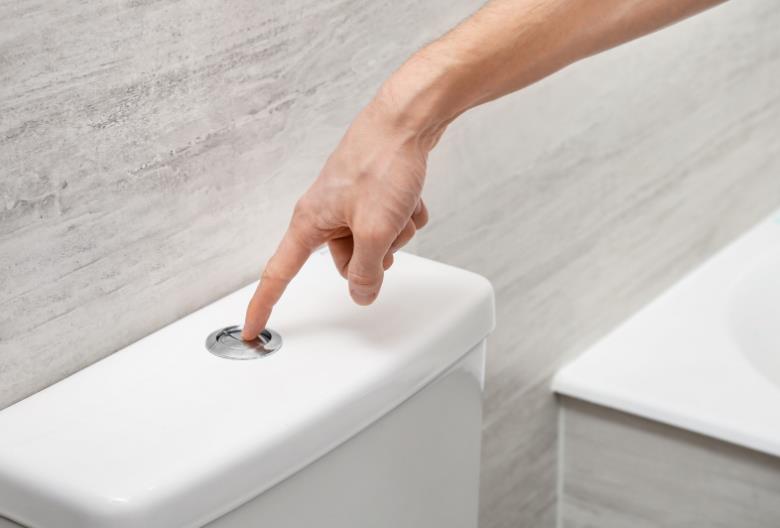When a toilet stops flushing, it may easily escalate from a minor irritation to a major problem for the whole family. This blog examines the typical causes of this issue and how to fix toilet not flushing. Knowing the fundamental causes of the problem will help you solve it successfully, whether it’s something that can be fixed easily or needs some extra work.
Why Is My Toilet Not Flushing?

Several factors can lead to a toilet that won’t flush properly. It might be something as simple as a clog in the bowl or as complex as an issue with the plumbing system itself. Here are the most common culprits:
Clogged Toilet

This is the easiest reason to figure out. Unused toilet paper, baby wipes, feminine hygiene products, and other non-flushable things can build up and obstruct the flow of waste and water from the toilet bowl to the sewer. These blockages may frequently be removed with a plunger since they are situated near enough to the surface. However, for more difficult blockages, a plumber’s snake or the removal of the toilet may be required to effectively eliminate the clog. This problem can be avoided with routine maintenance and careful flushing practices.
Faulty Flapper
A proper flush requires a functioning flapper in your toilet tank. It is in charge of causing water to be released into the bowl when pressing the flush handle. This flapper won’t hold water in the tank, resulting in a weak or insufficient flush, if it is not sealing properly or becomes damaged with time. In many cases, replacing a malfunctioning flapper is an easy and affordable solution to a variety of flushing problems. Ensuring that the chain is correctly linked and adjusted can also contribute to good flushing.
Low Water Level in Tank
For a powerful flush, the volume of water in your tank is essential. Too low of a water level will prevent the flush from having adequate force to clean the bowl. This problem is typically caused by a leak in the tank or by a float that isn’t positioned correctly, which regulates the water level. Fixing leaks or adjusting the float to maintain the proper water level can fix flushing issues. You can keep your toilet functioning properly by routinely inspecting these parts.
Blocked Inlet Holes
When you flush, tiny inlet pores in the rim of your toilet bowl allow water to enter the bowl. These holes may eventually fill with mineral deposits, dirt, or other debris that reduces the water flow required for a full flush. A little brush, a piece of wire, or professional cleaning solutions made to dissolve buildup can all be used to clean these holes. Reduced flushing efficiency from clogged intake holes can be avoided with frequent cleaning as part of your home maintenance routine.
How Can I Check My Not Flushing Toilet?
In order to identify the precise cause of a non-flushing toilet, you must employ a systematic approach that addresses several toilet components. After removing the toilet tank cover, begin by examining the flapper. This part is essential because it regulates the water flow during flushing from the tank to the bowl. Verify whether the flapper creates a tight seal when it is closed. Its replacement may fix the flushing problem if it shows signs of wear and tear, such as cracks or loose fit. Sustaining the proper water level and providing a thorough flush depends on a functioning flapper.
Check the water level, which should be approximately one inch below the overflow tube, while the tank is open. Too little water will not apply sufficient force to flush a toilet effectively. The water intake valve can be adjusted by altering the float, which is typically the solution to this problem. The tank can fill to the proper level if the float is adjusted correctly. Examine the rim feed holes beneath the toilet bowl’s rim as well. These are in charge of sending water into the bowl, and they may eventually clog with debris or mineral deposits. You can improve flushing power and restore appropriate water flow by cleaning these holes with a wire, brush, or special cleaning instrument.
A clog could be the cause of the problem if the flapper and inlet holes, among other mechanical parts, are functioning properly but the toilet isn’t flushing. Frequently, a plunger can remove the obstruction-causing object. By forcefully plunging, blockages in the drainage line or in the bowl can be removed, allowing the flush to function normally again. By following these guidelines, you can ensure that your toilet operates correctly and efficiently by identifying and resolving frequent problems without the need for expert assistance.
3 Solutions: How to Fix Toilet Not Flushing?
Once you’ve pinpointed the problem with your toilet, you can use one of these three effective solutions to restore its functionality:
Plunging the Toilet

- Tools Needed: A standard flange plunger is best for toilets, as it creates a stronger seal.
- Method: Ensure you have a good seal around the plunger in the toilet bowl. Use firm, consistent pressure to push and pull without breaking the seal. This action helps dislodge the clog effectively.
- Benefit: Plunging is a quick and easy way to clear blockages without the need for professional plumbing services. It’s effective for most minor to moderate clogs and restores toilet functionality quickly.
Adjusting or Replacing the Flapper
- Tools Needed: Replacement flapper (if necessary), possibly a screwdriver or pliers to adjust the chain.
- Method: First, check the condition of the flapper. If it’s damaged or warped, it should be replaced. If the flapper itself is intact, adjust the chain length so it can lift fully and allow enough water to flush.
- Benefit: Adjusting or replacing the flapper can solve many flushing problems related to poor sealing and inadequate water flow, leading to a more efficient toilet that uses less water per flush.
Cleaning Inlet Holes
- Tools Needed: A small piece of wire, a pin, or a specialized cleaning tool designed for toilet maintenance.
- Method: Inspect the rim feed holes located under the rim of the toilet bowl. Use your tool to gently remove any lime, mineral deposits, or debris that may be blocking these holes.
- Benefit: Clearing the inlet holes ensures that water flows properly into the toilet bowl, enhancing the flushing power and overall efficiency of the toilet. This can prevent future issues and improve the longevity of the toilet’s flushing mechanism.
Implementing these solutions not only helps to bring your toilet back to full functionality but also avoids the cost and inconvenience of calling in professional help.
Conclusion
It’s important to identify any probable reasons for improper toilet flushing and implement the necessary solutions in order to address the issue. It is possible to quickly and effectively fix your toilet by using the information provided in this article. Remember, most of these concerns can be avoided from getting worse with routine maintenance and early intervention when they occur. Always keep these useful suggestions in mind if your toilet is not flushing properly. Maintaining the hygienic and practical aspects of your home requires that your bathroom fixtures be in excellent operating order. Promptly resolving faults might also help you avoid future expensive repairs and water bill costs.
FAQs
What should I do if my toilet repeatedly clogs?
If your toilet frequently clogs, it might be due to inappropriate items being flushed, such as wipes, paper towels, or other non-flushable materials. Consider using thinner toilet paper or advising household members on what should not be flushed. If the problem persists, it could be a sign of deeper plumbing issues, and you may need to consult a professional.
Can I replace the flapper or do other repairs myself?
Most toilet repairs, such as replacing the flapper, adjusting the water level, or cleaning inlet holes, can be done without professional help. These parts are usually accessible in hardware stores, and plenty of tutorials are available to guide you through the process.
How often should I check my toilet’s components for maintenance?
It’s a good practice to inspect your toilet’s internal components, such as the flapper, fill valve, and inlet holes, at least once a year. Regular checks can help you catch and fix issues before they lead to bigger problems.

